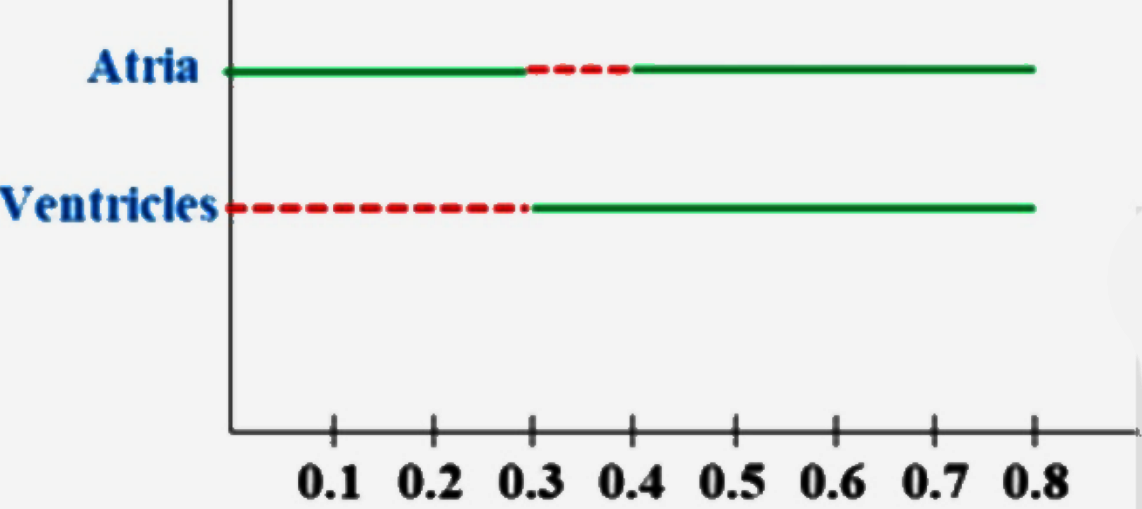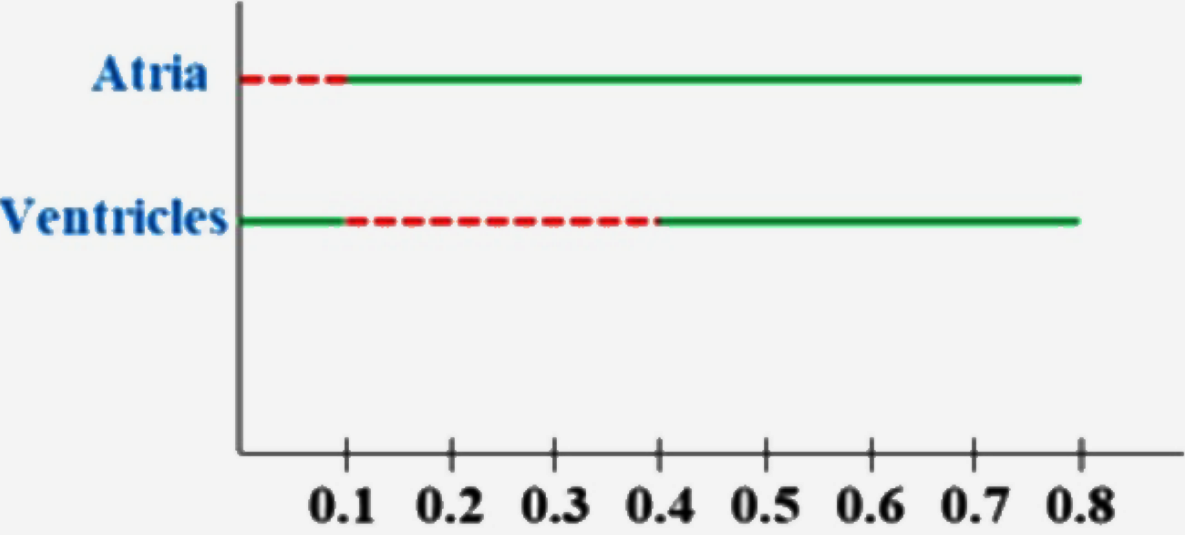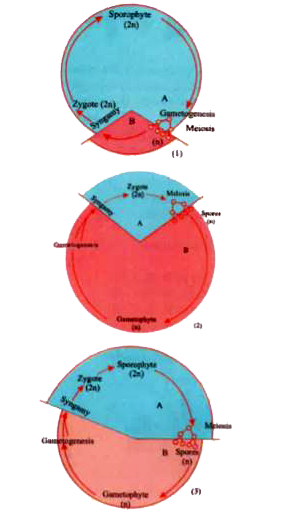Which of the following represents the correct events of a cardiac cycle beginning from the firing of an impulse from the pacemaker of the heart ?




The correct Answer is:C
To solve the question regarding the correct events of a cardiac cycle beginning from the firing of an impulse from the pacemaker of the heart, we will analyze the sequence of events that occur during the cardiac cycle.
1. Understanding the Pacemaker:
- The pacemaker of the heart is the Sinoatrial (SA) node, which is located in the right atrium. It initiates the electrical impulse that triggers the heartbeat.
2. Phases of the Cardiac Cycle:
- The cardiac cycle consists of several phases:
- Atrial Systole: This is the contraction of the atria, which lasts about 0.1 seconds. During this phase, blood is pushed from the atria into the ventricles.
- Ventricular Systole: This is the contraction of the ventricles, lasting approximately 0.3 seconds. Blood is ejected from the ventricles into the large arteries (aorta and pulmonary artery).
- Joint Diastole: This is the relaxation phase where both the atria and ventricles are relaxed, lasting about 0.4 seconds. During this time, the heart fills with blood.
3. Analyzing the Options:
- Option 1: This option suggests that atrial and ventricular contractions occur simultaneously, which is incorrect as atrial contraction occurs before ventricular contraction.
- Option 2: This option indicates that the atria relax first, which is incorrect since atrial contraction occurs before relaxation.
- Option 3: This option correctly states that atrial contraction occurs first (0.1 seconds), followed by ventricular contraction (0.3 seconds), and then joint diastole (0.4 seconds).
- Option 4: This option incorrectly states the timing of contractions for the atria and ventricles.
4. Conclusion:
- Based on the analysis, the correct representation of the events in the cardiac cycle beginning from the firing of an impulse from the pacemaker is Option 3.
- The pacemaker of the heart is the Sinoatrial (SA) node, which is located in the right atrium. It initiates the electrical impulse that triggers the heartbeat.
- The cardiac cycle consists of several phases:
- Atrial Systole: This is the contraction of the atria, which lasts about 0.1 seconds. During this phase, blood is pushed from the atria into the ventricles.
- Ventricular Systole: This is the contraction of the ventricles, lasting approximately 0.3 seconds. Blood is ejected from the ventricles into the large arteries (aorta and pulmonary artery).
- Joint Diastole: This is the relaxation phase where both the atria and ventricles are relaxed, lasting about 0.4 seconds. During this time, the heart fills with blood.
- Option 1: This option suggests that atrial and ventricular contractions occur simultaneously, which is incorrect as atrial contraction occurs before ventricular contraction.
- Option 2: This option indicates that the atria relax first, which is incorrect since atrial contraction occurs before relaxation.
- Option 3: This option correctly states that atrial contraction occurs first (0.1 seconds), followed by ventricular contraction (0.3 seconds), and then joint diastole (0.4 seconds).
- Option 4: This option incorrectly states the timing of contractions for the atria and ventricles.
- Based on the analysis, the correct representation of the events in the cardiac cycle beginning from the firing of an impulse from the pacemaker is Option 3.
Topper's Solved these Questions
Similar Questions
Knowledge Check
Which of the following statements is correct for cardiac cycle?
AThe ventricular systole is stimulated by the SA node.BThe first heart sound coincides with the closure of semilunar valves and relaxation of ventricles.CThe first heart sound coincides with opening of AV valvesDThe fall in ventricular pressure causes the closure of semilunar valve to prevent the back-flow of blood into ventricles.Which of the following correctly represents the type of life cycle patterns from the option given
 A1. Diplontic 2. Haplodiplontic 3. HaplonticB1. Haplodiplontic 2. Haplontic 3. DiplonticC1. Haplontic 2. Diplontic 3. HaplodiplonticD1. Diplontic 2. Haplontic 3. Haplodiplontic
A1. Diplontic 2. Haplodiplontic 3. HaplonticB1. Haplodiplontic 2. Haplontic 3. DiplonticC1. Haplontic 2. Diplontic 3. HaplodiplonticD1. Diplontic 2. Haplontic 3. HaplodiplonticWhich of the following diagram is/are wrong representation of cardiac cycle?
 A1 and 2B2 and 3C3 and 4D1 and 4
A1 and 2B2 and 3C3 and 4D1 and 4
Which of the following correctly represents the type of life cycle patterns from the options given?

View SolutionIdentify the correct sequence of events in a cardiac cycle
View SolutionWhich of the following statements about the cardiac cycle is CORRECT?
View SolutionIdentify the correct sequence of events in a cardiac cycle
View SolutionIdentify the correct sequence of events in a cardiac cycle :−
View Solution

